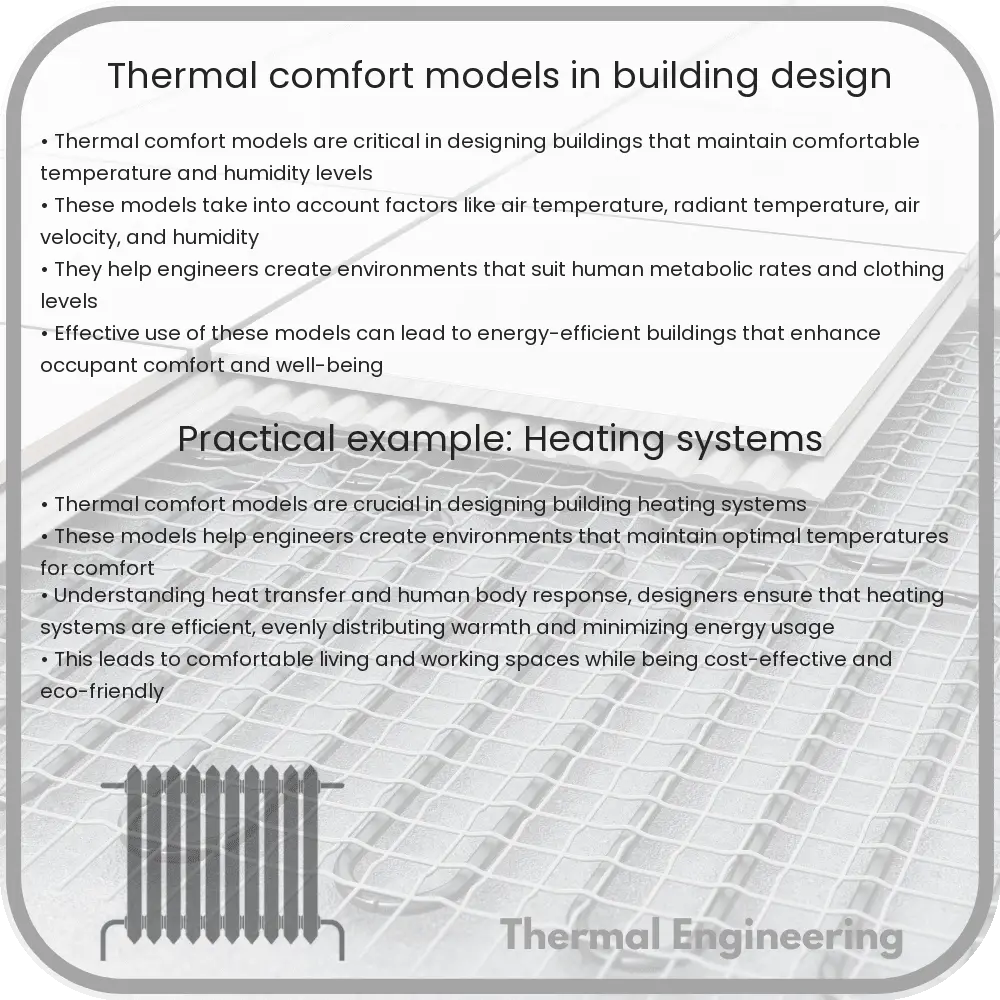Explore how thermal comfort models, like Fanger’s Comfort Model, enhance building design for optimal occupant comfort and energy efficiency.

Understanding Thermal Comfort Models in Building Design
Thermal comfort is a critical aspect of building design, affecting not only the well-being and productivity of occupants but also the energy efficiency of the building itself. Engineers and architects use thermal comfort models to predict how different designs and systems affect the perceived temperature comfort of those inside a building. This article explores the basics of these models and their applications in modern building design.
What is Thermal Comfort?
Thermal comfort refers to the condition of mind that expresses satisfaction with the surrounding environment (ASHRAE Standard 55). It is influenced by various environmental factors such as air temperature, humidity, radiant heat, and air velocity, as well as personal factors like clothing insulation and metabolic heat. Achieving an optimal thermal comfort level is key to designing effective and energy-efficient buildings.
Fanger’s Comfort Model
One of the foundational models used in thermal comfort studies is the Fanger’s Comfort Model, developed by P. Ole Fanger in the 1970s. This model uses the Predicted Mean Vote (PMV) index to predict the average comfort vote of a large group of people on a seven-point thermal sensation scale from cold (-3) to hot (+3). The PMV is calculated based on six factors:
- Air temperature
- Radiant temperature
- Air velocity
- Ambient humidity
- Clothing insulation (clo)
- Metabolic rate (met)
The equation derived from these factors is:
PMV = (0.303 * exp(-0.036M) + 0.028) * (M – W – 3.05 * (5.73 – 0.007M – pa) – 0.42 * (M – 58.15) – 0.0173M * (5.87 – pa) – 0.0014M * (34 – ta))
Where M is the metabolic rate, W is the external work, pa is the water vapor pressure in the air, and ta is the air temperature. This formula helps designers anticipate the thermal comfort level in proposed building environments.
Applications in Building Design
Thermal comfort models are critical in the design of HVAC (heating, ventilating, and air conditioning) systems, in the selection and design of building materials, and in the architectural layout of interior spaces. By predicting thermal comfort, designers can:
- Optimize HVAC system performance to match the predicted load.
- Choose building materials that moderate extreme temperatures and maintain comfortable conditions.
- Design spaces that naturally maintain comfort through orientation, window placement, and shading.
- Reduce energy consumption while maintaining comfort, leading to greener building designs.
Challenges and Future Directions
While models like Fanger’s PMV are widely used, they are not without challenges. Individual thermal comfort can vary significantly, influenced by personal preferences, acclimation, and other factors not considered in the PMV index. Future developments in thermal comfort modeling involve more adaptive and personalized approaches. This includes real-time monitoring systems and AI-driven models that can dynamically adjust building systems based on real-time data and preferences, pushing the boundaries of energy efficiency and personal comfort in building designs.
As we continue to refine these models and technologies, the integration of thermal comfort in building design promises to enhance human comfort and energy sustainability in environments worldwide.